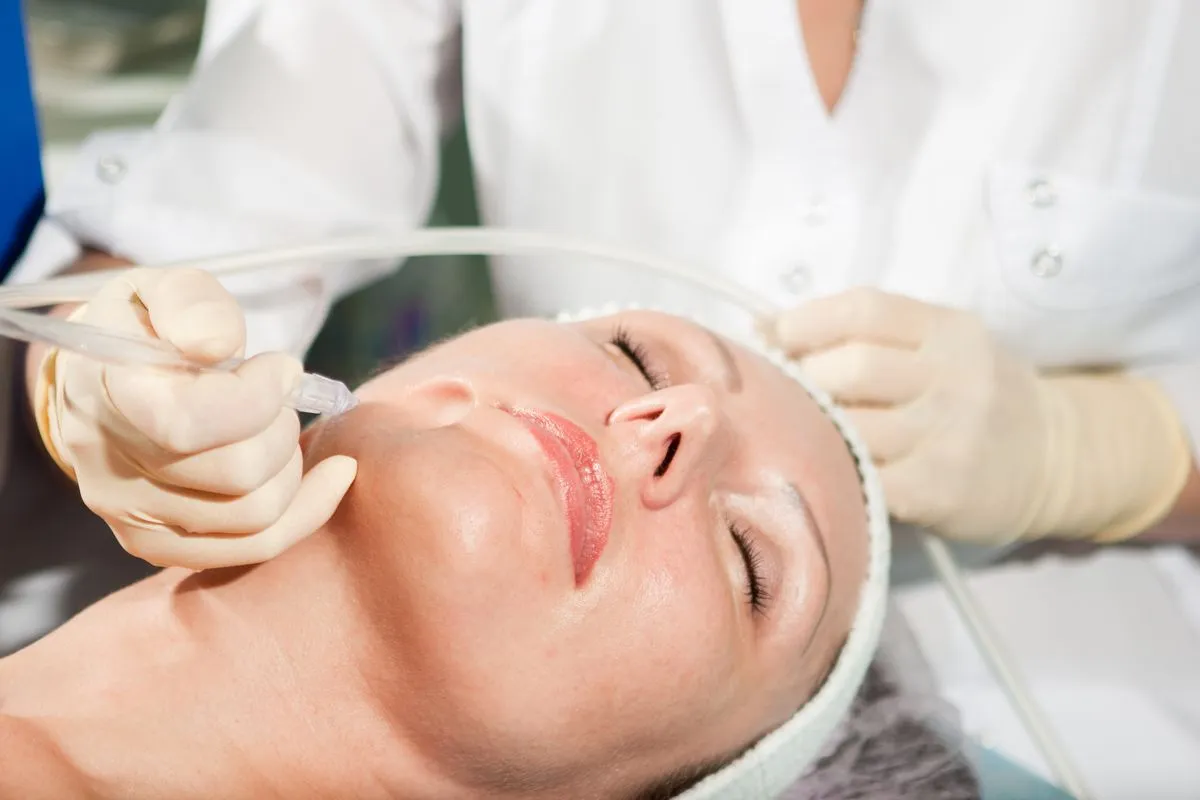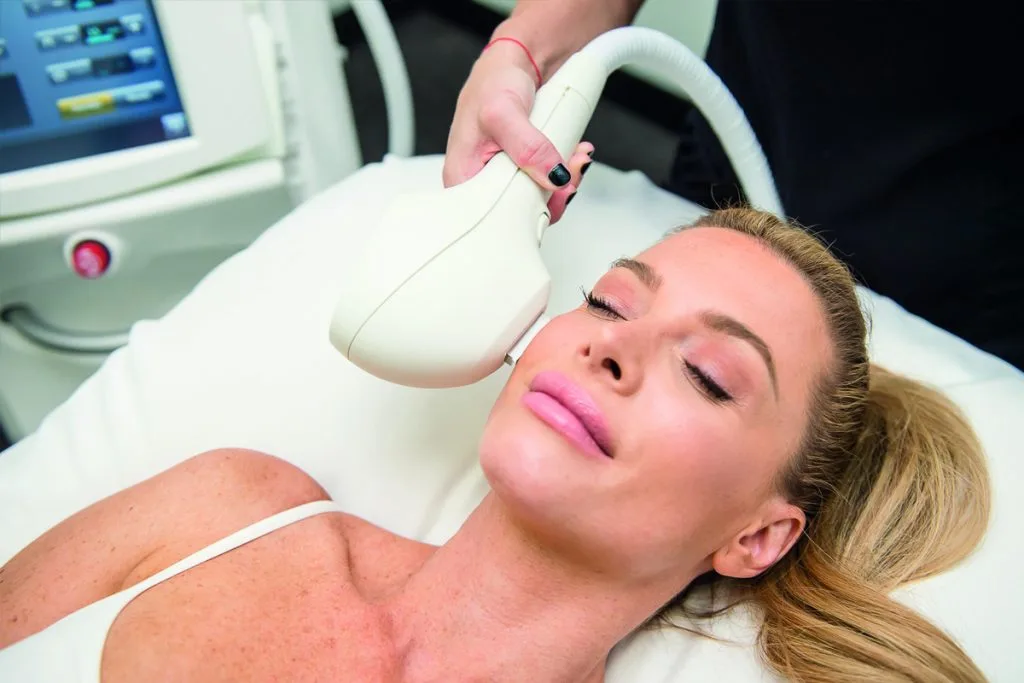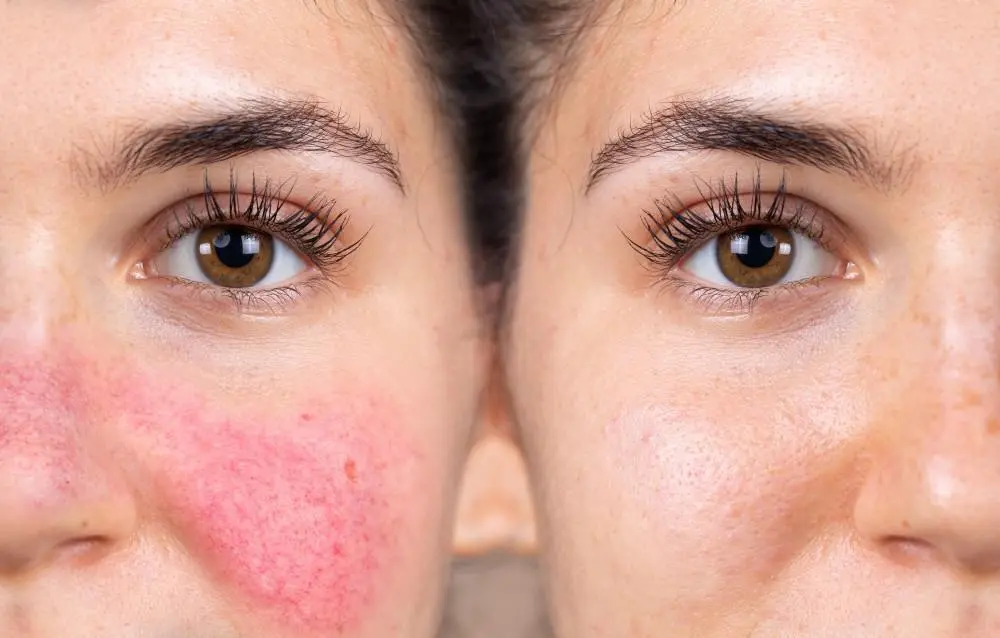Rosacea Procedures in Abu Dhabi
Elyzee Hospital is one of the best medical centers in Abu Dhabi, specializing in Rosacea Procedures.

Rosacea Procedures: Achieving Clear and Radiant Skin
A significant number of people worldwide endure persistent facial redness referred to as rosacea – a chronic skin condition that isn’t curable but manageable through several procedures. Some visible signs include blood vessels along with papules or pustules on affected parts of the skin. In this article, we offer insights on why undergoing rosacea procedures could prove beneficial in symptom control and enhance overall skin appearance. We will also discuss who might consider these treatments as well as lay out steps involving consulting services before undertaking such therapies alongside processes experienced during sessions through recovery phases up until final results.
The Benefits of Rosacea Procedures
Rosacea procedures offer a range of benefits for individuals struggling with this skin condition. These procedures can help reduce facial redness, minimize the appearance of blood vessels, improve skin texture, and alleviate associated discomfort such as stinging or burning sensations. By targeting the underlying causes of rosacea, these treatments aim to provide individuals with clearer, calmer, and more radiant skin.


The Best Candidate for Rosacea Procedures
Rosacea procedures are suitable for individuals experiencing symptoms of rosacea, including persistent facial redness, visible blood vessels, and skin texture irregularities. Ideal candidates may have tried topical treatments and oral medications with limited success or seek more targeted and long-lasting solutions for their condition. However, it is important to consult with a qualified healthcare provider to determine the most appropriate procedure based on individual circumstances and the severity of the rosacea.
Consultation with a Doctor and Preparation for the Procedure
Before undergoing any rosacea procedure, it is crucial to schedule a consultation with a skilled healthcare provider specializing in dermatology or aesthetic medicine. The aim of this consultation with your healthcare provider is to assess your individual skin condition while delving into details about relevant aspects of your medical history. Following this assessment, a personalized treatment plan suited exclusively for you is crafted by them and conveyed clearly during their explanation where they detail its possible benefits while drawing attention towards any possible risks at hand as well . They’ll also advise appropriately on preparing oneself adequately before undergoing the procedure- doing things like not taking specific types of medication leading up to it that could have adverse effects- so as to ensure that the desired outcome is achieved without any complications.
What's Happening During the Procedure
The specific procedure for rosacea will depend on the chosen treatment modality. Some common rosacea procedures include:
1. Laser Therapy: Laser treatment uses focused light energy to target and reduce visible blood vessels, redness, and inflammation associated with rosacea. The healthcare provider will apply the laser device to the affected areas, delivering precise bursts of light that selectively destroy the blood vessels while leaving the surrounding skin unharmed. Protective eyewear is typically worn during the procedure, and a cooling gel or numbing cream may be applied to enhance comfort.
2. Intense Pulsed Light (IPL) Therapy: IPL therapy utilizes broad-spectrum light to target and treat the redness and visible blood vessels associated with rosacea. Akin to laser treatment, IPL is another method used for precise targeting of problematic areas on our skin through controlled pulses of light. Specifically designed to be absorbed by blood vessels within the targeted area, heat causes their collapse which leads to a reduction in redness and an improved look of our complexion overall.
After the Procedure and Recovery
Following a rosacea procedure, it is common to experience some temporary redness, mild swelling, or sensitivity in the treated area. The healthcare provider will provide specific post-procedure instructions to promote proper healing and minimize discomfort. For those grappling with rosacea symptoms, managing them can involve making certain lifestyle adjustments. Such adjustments may encompass soothing affected areas through cold compress applications alongside using mild skin cleansers and moisturizers during daily facial care routines while ensuring little or no exposure under direct sunlight also avoiding activities which disturb their skin further. Giving attention and consistent adherence towards these guidelines will result in a smooth healing process.
Final Result
A person’s response to a rosacea treatment is influenced by numerous aspects like which course of action they take to remedy how well they adapt to it and whether their condition is acute or not. Nevertheless various individuals have professed experiencing noticeable relief from their symptoms following medication, diminished blood vessels, and an overall improvement in skin tone and texture. Selective patients might require multiple procedure sessions before their optimal results become fully apparent. Therefore, it’s vital to preserve consistent healthy skin habits and adhere to medical recommendations for continued advantageous output.
Conclusion
Rosacea, which is a skin disorder, can significantly undermine an individual’s self image and general satisfaction with life. Fortunately, various rosacea procedures offer effective options for managing and minimizing its symptoms. A comprehensive assessment of each individual’s unique needs will help determine which procedures are best suited for them as well as how they should approach good aftercare. With dedication and patience in following these protocols strictly. People living with rosacea can undoubtedly enhance both physical appearances and overall self image. Reliance on professional medical expertise suggests that there are established treatments like dermatology or therapy available for people living with moderate or severe cases of Rosacea.

FAQs
Discomfort levels during rosacea procedures can vary depending on the individual and the chosen treatment. However, most procedures are well-tolerated, and healthcare providers often take steps to ensure patient comfort, such as applying numbing cream or utilizing cooling techniques.
Discomfort levels during rosacea procedures can vary depending on the individual and the chosen treatment. However, most procedures are well-tolerated, and healthcare providers often take steps to ensure patient comfort, such as applying numbing cream or utilizing cooling techniques.
It is worth noting when discussing rosacea treatment options that there are various elements which could impact the durability of any benefits achieved. Such variables include which specific procedure was performed along with an individuals’ metabolic reactions and various lifestyle considerations like diet or smoking habits which might affect outcomes over longer periods. Practitioners typically have success at achieving lasting effects from these types of interventions though it is not uncommon for ongoing maintenance therapy or future follow up appointments to be recommended so as to maintain those positive gains over time.
When it comes to managing the effects of rosacea on ones’ skin. Many different treatment options exist. It should be noted however that unfortunately there is still not a known permanent “cure” for this condition yet. Despite this limitation though. Recent advances in skincare and dermatology science have helped us develop groundbreaking new techniques that can still significantly improve both appearance and reduce recurrence of symptoms over time!
When considering rosacea procedures it’s essential to weigh potential drawbacks including possible risks and side effects involved in the process’s success rates. Temporary limitations like swollen regions of skin reddening tenderness are typical outcomes observed by patients in most cases. Consultation with qualified physicians before seeking treatment is essential for patients in discussing pre-existing health issues relevant for their suitability for said option.
Personalized skin care regimes involving specialized topical medications, coupled with rosacea procedures are viable options in managing individual-specific skin conditions. Healthcare providers are better-placed professionals for evaluating appropriateness in using combined treatment modalities; thus get an expert opinion before embarking on one’s preferred therapy route that guarantees favorable outcomes.
Note: Its’ important to clarify that this blog post is designed to offer general information on rosacea procedures but should not serve as a replacement for professional medical counsel. For optimal guidance and treatment suggestions tailored to your unique needs. We recommend consulting with a trusted healthcare provider.
Make An Appointment

